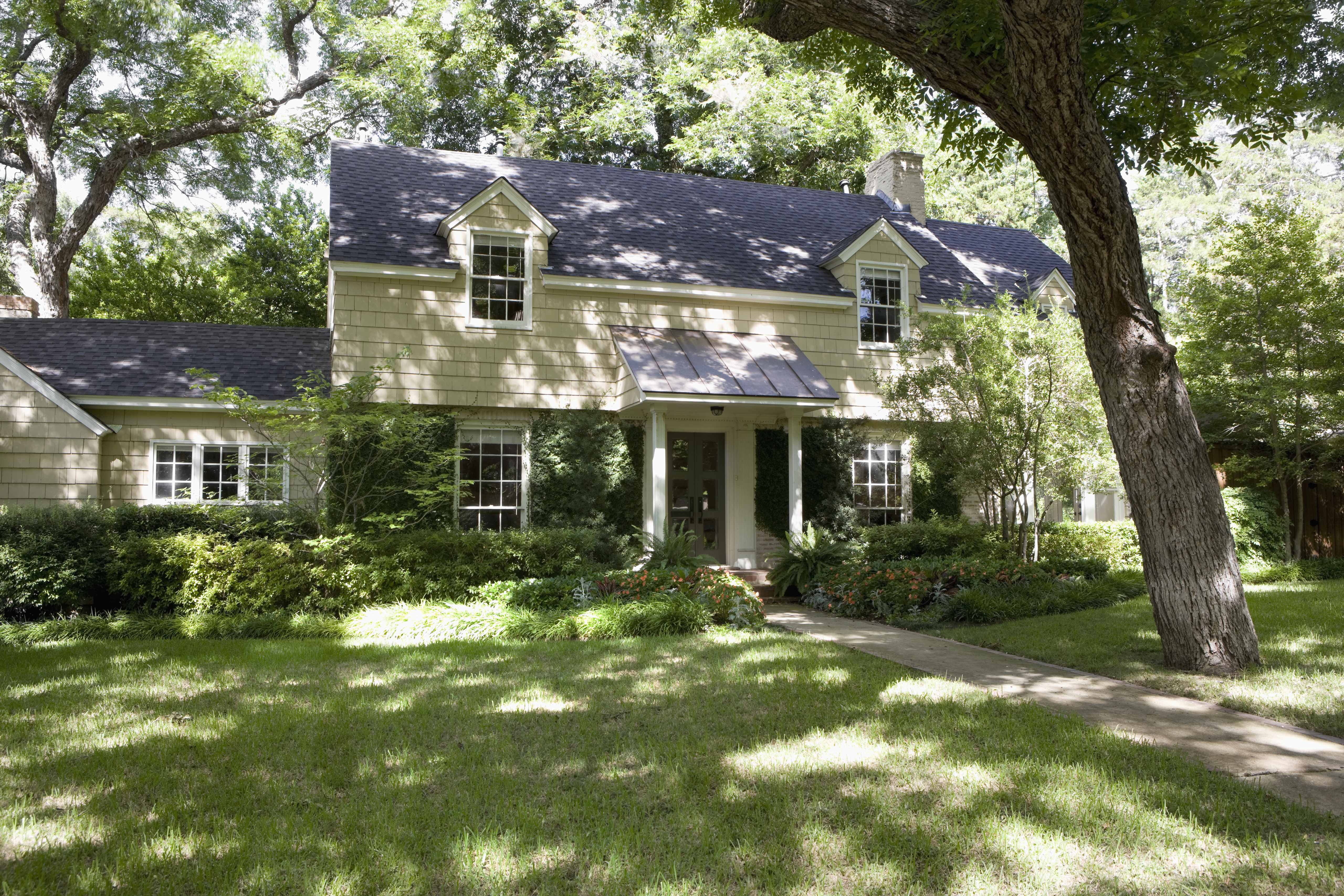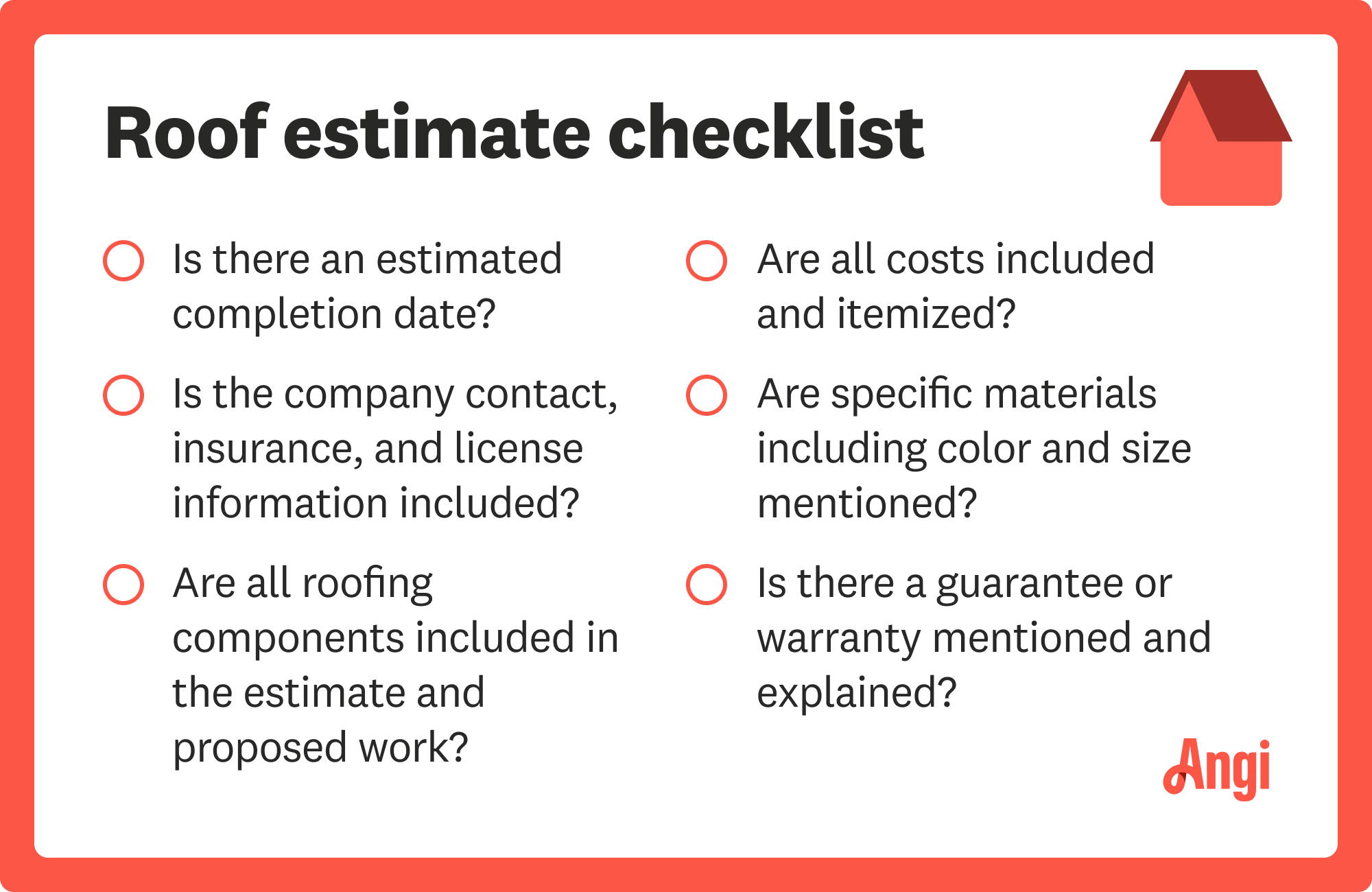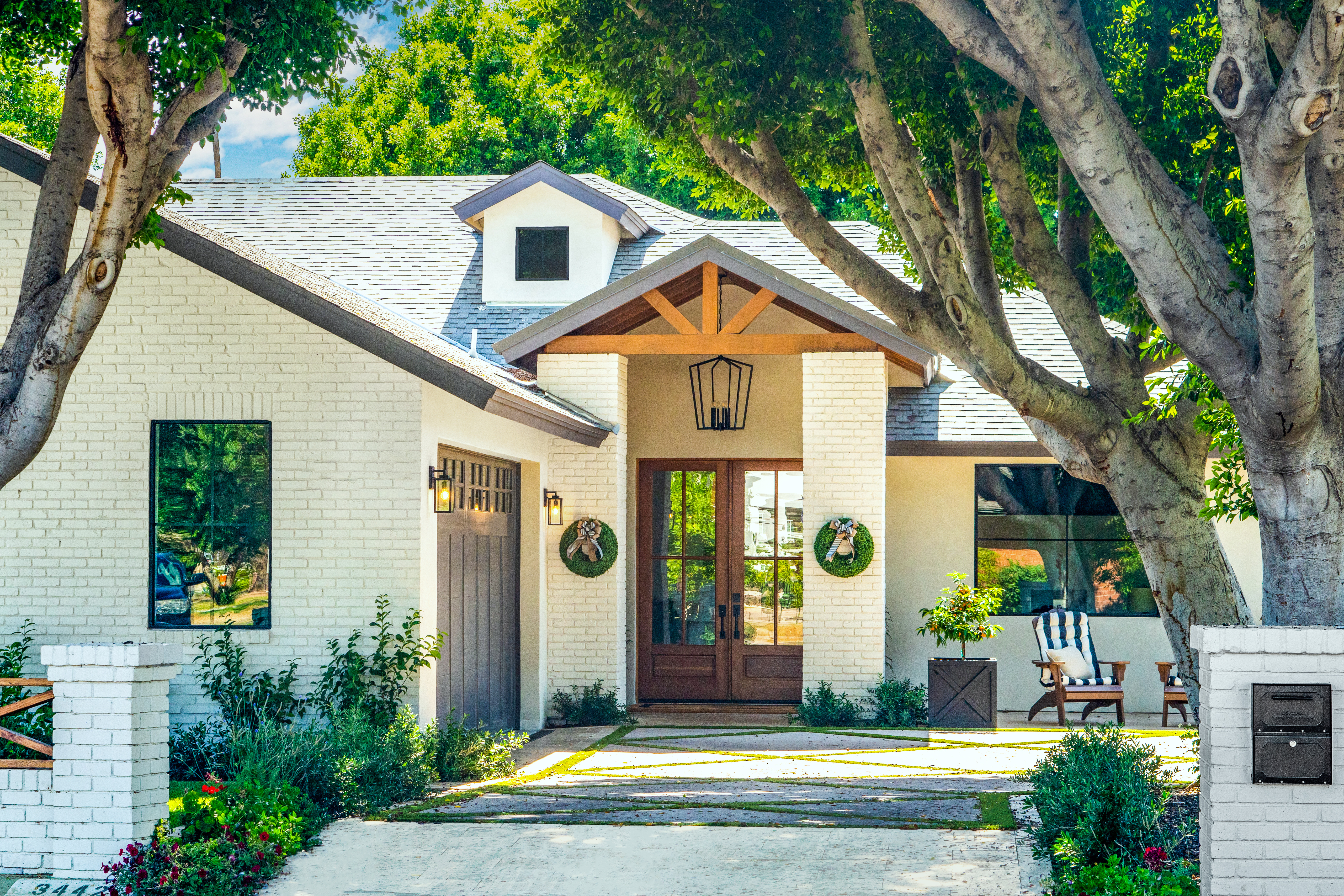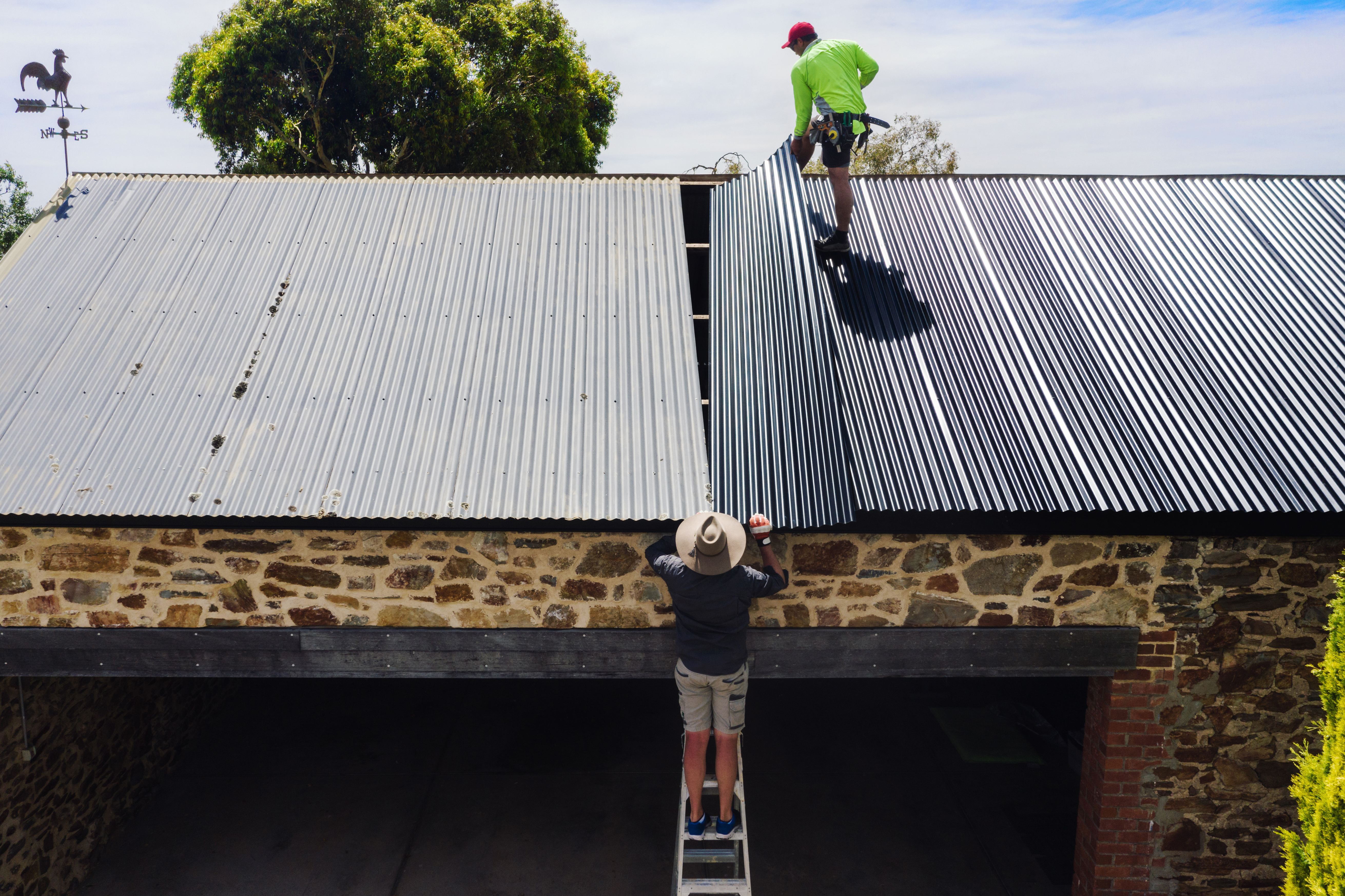
Roof replacement costs in Dallas depend on roof size, material, and more. Find out how much roof replacement costs in Dallas and what affects the final price.
Don’t let anything (other than the roof itself) go over your head


A proper roofing estimate establishes clear expectations for both parties.
Use the estimate to verify your roofer's credentials, licensing, insurance, and any work guarantees.
You should also get project timelines and details, as well as itemized costs.
Roofing estimates might raise red flags if they lack information about the company, insurance and licensing, materials, warranties, or permits.
If you don’t know what to look for in a roofing estimate, you might not get accurate pricing or, worse, sign with a company that doesn’t have the experience and licenses necessary to complete the job. Learning what should be included in a roofing estimate will help avoid any unexpected surprises after you sign a contract. This can save money, time, and frustration in the long run.
A roofing estimate—also known as a roofing bid or roof quote—should tell you everything you need to know about your roof repair or replacement project. The estimate should detail the work that your roofer plans to do, the materials they will use, and the timeline for the work. It will also outline the material and labor costs to get it done.
Depending on your roof's condition, you may get a roof inspection first and then a roofing estimate afterwards. Either way, this estimate puts you and the roofer on the same page before making things official with a signed contract. That’s why it’s important to ensure that the roofing estimate has all of the necessary information.
Consider getting roofing estimates from at least three reputable providers before choosing a roofer. This will allow you to compare the services provided and see the projected costs.
The primary purpose of a roofing estimate is to provide pricing for work and materials. However, you should look for some specific things before agreeing to the work proposed in an estimate.

The first things you’ll want to tick off of your roof estimate checklist are the project timeline and the contact information for your roofing professional. Look for the following as you review the proposal:
Does it contain basic contact information, such as company name, phone number, physical address, and email address?
Is there an outline of who is responsible for what (i.e., who oversees the day-to-day work, and where should you send payment?)
Are the estimated start and completion dates listed?
Is there language regarding unexpected delays in the work, and what will happen if the roofer runs into issues?
A professional roofing company will automatically include this information in your estimate. Use it to get an idea of the contractor you’ll be hiring and how long it will take for them to complete the work.
Check licenses and insurance information before hiring a roof installer or a roof repair company near you. You’ll want the professional to have a roofing contractor’s license or a general contractor’s license, along with workers’ compensation and general liability insurance. Note that cities and states have different contractors’ licenses and insurance requirements. Hiring a contractor who lacks qualifications carries risk—not just for shoddy work but also for personal injury.
You may also want your roofing estimate to include proof of bonding, which provides protection if your contractor fails to complete their job as per the contract. Just keep in mind that most residential roofers are not bonded; this is more of a requirement for commercial roofers.
Many roofers provide general pricing in their estimates, which includes a lump sum for the entire project, including all materials and labor. You can request that your professional itemize the costs so you know exactly where your money is going. This also helps you get an “apples to apples” comparison among the bids you get, which could save you money on your project. You can ask your roofer to list out the costs of the following:
Labor
Permits
Materials (shingles, underlayment, fasteners, decking, flashing, etc. These estimates can include brands and quantities)
Specific work being done
Cleanup and removal of construction debris
A roofer may not include a labor line item if they’re factoring it into the overall cost. The goal is to inform you of the specific work they’ll complete and how much each portion of the work will cost.
Roofs have many different components. At the very least, your roofing estimate should detail the major components that your professional will repair or replace, but it might also include information about things like waterproofing and ridge capping. Look out for the four major categories below.
Underlayment is a protective layer that your roofer will put over your roof’s decking. Your contractor should outline the thickness, type, and manufacturer of the underlayment they plan to use. The three main types are asphalt-saturated felt, rubberized asphalt, and synthetic underlayment.
Homeowners must choose between two types of roof ventilation: active and passive. Active ventilation circulates by pulling outside air into the home and pushing inside air out. Passive ventilation circulates using natural forces like wind and thermal buoyancy. While passive ventilation is a greener option, it’s not as consistent as active ventilation. You’ll also have to choose the type of vent, which your contractor should include in your estimate.
The price of shingles should either appear on your estimate on a per-square-foot basis or with a cost per “roofing square” (which is 100 square feet). Like underlayment, your contractor should outline the type of roof shingle, manufacturer, and amount they plan to use. Check the color of the shingles your contractor mentions on the estimate, as well as any additional material they purchase for your project, to account for waste. A normal waste overage is around 10%.
If a homeowner is using an asphalt dimensional shingle, they should ask for the product information on what ridge shingles will be used and what the warranty on the ridge shingles is. Many contractors save money by putting a 20- to 25-year ridge shingle on a 30- to 50-year field shingle. When comparing estimates, this can be a hidden difference that many homeowners don't notice.
Flashing is a thin metal material used to direct water away from certain areas of your home. Your estimate should outline the type of flashing your professional will install, where they will place the flashing, and whether they’ll be reusing the existing flashing to save money.
Most building codes also require drip edges on houses. Ask your contractor if they plan to use a metal drip edge around the perimeter of your roof. Finally, ensure that your contractor plans to replace the pipe jacks, which are the flashings that go over the PVC plumbing vents on the roof.
Decking is the heart of a roof, as it provides a flat, level surface to which your contractor can fasten the roofing material. Roof decking is often plywood, which is prone to rot when exposed to moisture. It’s hard to know if your decking has rotted until your contractor starts to tear off the old roof. For this reason, your estimate should include how much it will cost to replace the decking if it’s needed. That way, there will be no surprises.
Roofing materials often come with a manufacturer’s warranty, which covers defects in materials. Your contractor may also offer a separate workmanship warranty that guarantees the quality of their installation. While manufacturer warranties are typically not included in the roofing estimate, it should clearly explain the workmanship warranty, including what it covers, what it excludes, how long it lasts, etc.
The roofing estimate should also include clearly defined payment terms. A professional roofing company will outline the total cost of the project, along with when and how payments are expected. This helps avoid misunderstandings and ensures both parties are on the same page. Look for these answers on the roofing estimate:
Is there a payment schedule?
What forms of payment are accepted?
Are there penalties or fees for late payments?
Is a deposit required?
It’s helpful to have a ballpark figure for your new roof before getting estimates. Comparing your quotes to national or local averages can rule out overpriced contractors, saving you money on your project. Figuring out approximate costs is a relatively straightforward process that most homeowners should be able to do themselves.
Start by calculating your roof’s square footage by multiplying your home’s square footage by the pitch multiplier. You can use the average roof pitch of 6/12 (which means 6 inches of rise for every 12 inches of run), but it’s best to have a professional get up on your roof and measure the pitch.
Once you have the roof square footage, use the prices in the table below to estimate the total. These prices are for materials only, so costs will be higher depending on your contractor’s labor rates. Including labor, the average cost for a roof replacement is between $4 and $11 per square foot.
| Roof Material | Average Cost Range (per Sq. Ft.) |
|---|---|
| Asphalt | $2–$5 |
| Clay tile | $5–$13 |
| Concrete tile | $5–$10 |
| Metal | $6–$38 |
| Slate | $9–$25 |
| Wood shakes | $6–$16 |
You might also incur additional charges for other services, like removing an existing roof or getting an inspection.
During the process of getting and reviewing roof estimates, watch out for the following red flags, which signal a company might not provide high-quality roof replacement or repair.
Lack of company information: No experienced roofer will provide an estimate without company information. A lack of business and contact details could suggest that the roofer doesn’t have much experience yet or that they plan on contracting out the work.
No insurance or licensing information: You should never have any work done on your roof (or elsewhere in your home) by a professional who doesn’t have general liability and workers’ compensation insurance, as well as a roofing or general contractor’s license. Always ask for these pieces of information when reviewing estimates.
No details about materials: Roofers won’t always completely itemize their estimates, but they should, at the very least, provide information about the types, brands, and colors of the materials they’ll be using. You want to make sure you get the roof you’re expecting.
Much lower numbers than competitors: If you have multiple bids, avoid low-ball estimates. Some roofers underbid in an effort to secure your business and then increase costs with work order changes once they begin. Others may underbid with the intention of cutting corners to keep costs down, which, of course, you don’t want.
Large down payment requirements: Up to a 50% down payment is standard for residential roofing contracts, but be wary of roofers who demand full payment up front. Professional roofing contractors will not do this, and it could be a warning sign of a roofing scam.
No warranty information: All roofing work should include some kind of workmanship warranty to ensure your professional carries out solid work.
No permit costs: If your contractor doesn’t include permit costs for your job in their estimate, they might be planning on doing the work without a permit. This could result in violation fees from your building department. It also suggests a lack of professionalism.
Honestly, I was skeptical because my carpet is old and has seen better days, but they totally surprised me. The results were fantastic ? it looks years younger. Definitely recommend!
Highly recommend Green City Pros for duct cleaning! Leroy did a thorough job, And the difference in air quality was noticeable immediately. I'd gladly recommend this company to anyone looking for quality air duct work.
Anil Patel and ASP Roofing are the best of best in the business. Their workmanship is excellent. Their customer service is excellent. Their ideas and recommendations have been excellent. I'm extremely picky when it comes to construction and repairs to my home. My only regret is that I did not...
Having that much work is never easy, but Zip Roofing worked well with my house insurance, and always showed up when expected. Work done well.
The guys at Midwestern Construction were great! I was very pleased with the professionalism at Midwestern, anytime I had a question they were just a phone call away with an answer for me. I am very pleased with with work that was done as well as the short amount of time that it took for them...
All I can say is that it that it is my experience that is VERY difficult to get reliable high quality work performed in Tucson and it is never an easy process. As for the work this company performed, I had hired other contractors to get this work done and they charged me money and did the...
Restored Investments handled every aspect of my insurance claim and did a fantastic job replacing my roof after the recent hail storm.
Ryan Scott was a tremendous help in the handling of our hail claim, and subsequent roof damage, and other property damages. When the insurance company offered us on 25% of the value of the claim, Ryan stepped in and worked with the insurance company, providing them photos, repair estimates,...
From average costs to expert advice, get all the answers you need to get your job done.

Roof replacement costs in Dallas depend on roof size, material, and more. Find out how much roof replacement costs in Dallas and what affects the final price.

Roof repair costs in Dallas vary based on the type and extent of the damage and your roofing material. Learn how much roof repair costs in Dallas with our guide.

Learn about metal roof costs in Dallas and what factors affect pricing to get an idea of how much you should budget for your roof project.

Homeowners can fill a gap between their roof and wall with sealant or wire mesh. Here are three steps to help you get the project done safely.

Understanding the styles and types of metal roofs available can help you make the best choice for your home. We’ll discuss the best options for metal roofs.

Architectural shingles come in a variety of colors and styles and are a durable way for homeowners to recreate some of their favorite roofing looks.